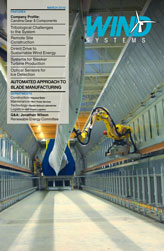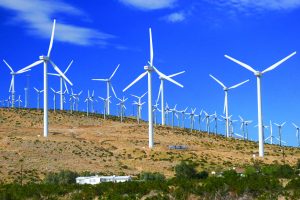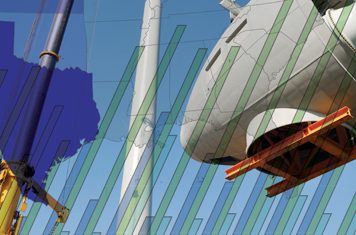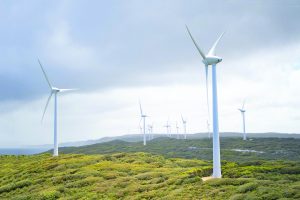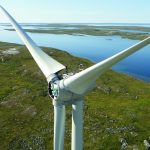As wind turbines have gotten larger over the last couple of decades, it is difficult to imagine the limitations in size or the future innovation that will be part of next-generation designs. Over time the industry has continued to develop larger utility-scale wind systems to leverage the economies of scale and capitalize on wind resources available at higher elevations. Although wind systems today look much like the ones 20 years ago, both experience and fundamental knowledge has been applied to current designs, enabling them to be cost effective and reliable.
Although most machines today share the same architecture as the older models, advancements in sensors, controls, and power electronics has provided opportunities for designers to develop algorithms and operational strategies that continually attempt to maximize energy capture, load management, and reliability.
A typical turbine today relies on hundreds of sensors for their effective operation and survivability. The role of those sensors vary from control observers—wind speed, high-speed shaft RPM, pitch position—and fault detections, including generator over temp and cable twist, to conditional health monitoring of gearbox lubricant quality and vibration levels, etc. The effective operation of these sensors is crucial for the safe operation of the machine and must operate reliably throughout the design life, which is typically 20 years. This strategy is increasingly important for offshore systems, as machines are more complicated and have limitations in access when compared to land-based systems.
In the future sensor systems may play an even larger role on wind turbines. Currently, U.S. and European laboratories are engaged in the development and application of sensor and operational measurement methods. Some of the key objectives include: determination of inflow loads and damage state (Sandia), advanced condition monitoring of gearboxes (NREL), and monitoring localized aerodynamic flow conditions (Risø DTU National Laboratory). These technologies are all targeted at building a smarter wind turbine that can itself identify the loads being applied by the wind, the damage created by these loads, and deploy control strategies to mitigate the loads while maintaining optimal power productions.
In order for newer, higher-fidelity sensors to be adopted there are several challenges/observations that must be addressed: sensor arrays and interrogator must have minimal cost, simple installation, and an operational life on the order of years, and tens of years. Over these long durations of application the sensor must also maintain calibration and sensitivity, otherwise type 1 and 3 errors (false positive and false negative) will reduce the reliability and usefulness of the technology. Sandia’s sensor program is focused on identifying sensor technologies that can potentially fulfill these design requirements. Currently, Fiber Bragg strain sensors interrogated over fiber optic lines, ruggedized accelerometers, hot-film aerodynamic sensors, and aerodynamic surface pressure taps are all simultaneously being investigated. Each sensor technology is evaluated to determine the relative cost which is dictated by the number of sensors required to accurately monitor the rotor blade, the cost of the interrogator used to measure the sensor signal, and the optimal/reliable method for integrating and protecting the sensor to maximize survivability.
Examples of the adoption of new sensor technologies can be seen in several commercial machines, with several wind manufacturers relying on fiber optic networks on the blades to enhance operation and control strategy. These sensors offer flexibility, in that many sensors can be placed in a single fiber line and incorporated into the manufacturing process.
As we foresee future designs, it is important to acknowledge that innovation will continue to play a key role in making wind systems more reliable and cost-effective. Sensor technologies are just one of those key elements that will continue to contribute to turbine optimization. It is conceivable that sensors will not only contribute to single turbine improvements in the future, but will also be utilized for wind-plant operations, as machines could have the ability to adapt to address real-time conditions.
















